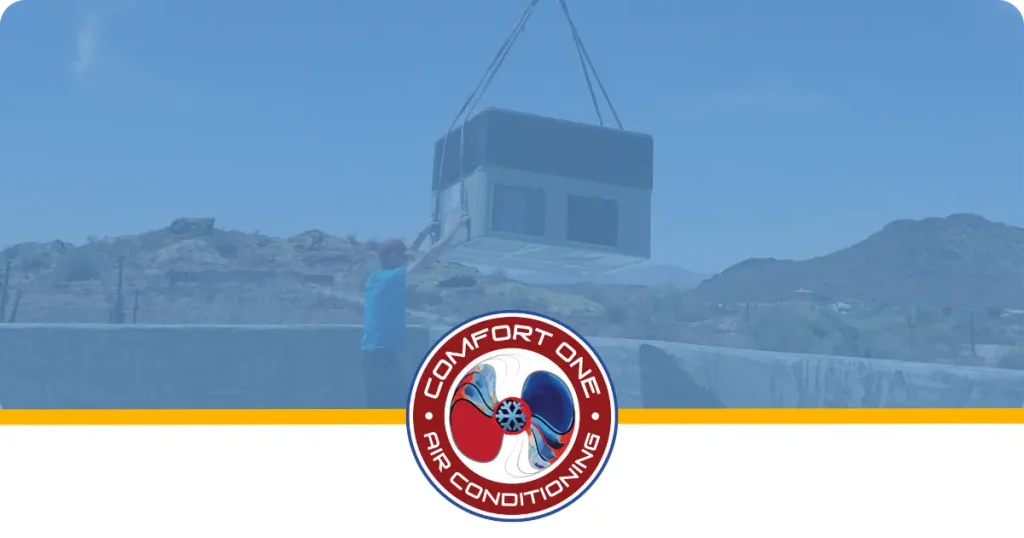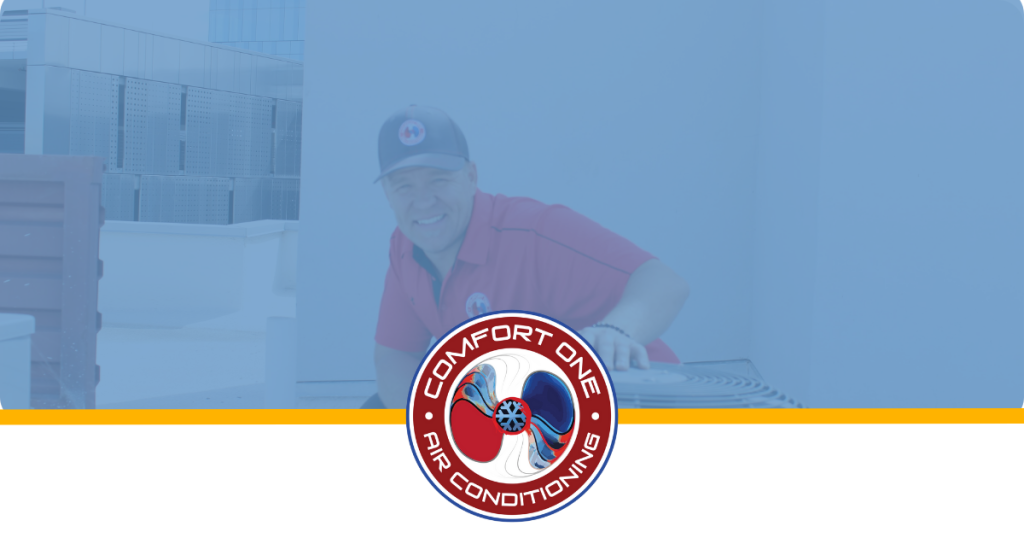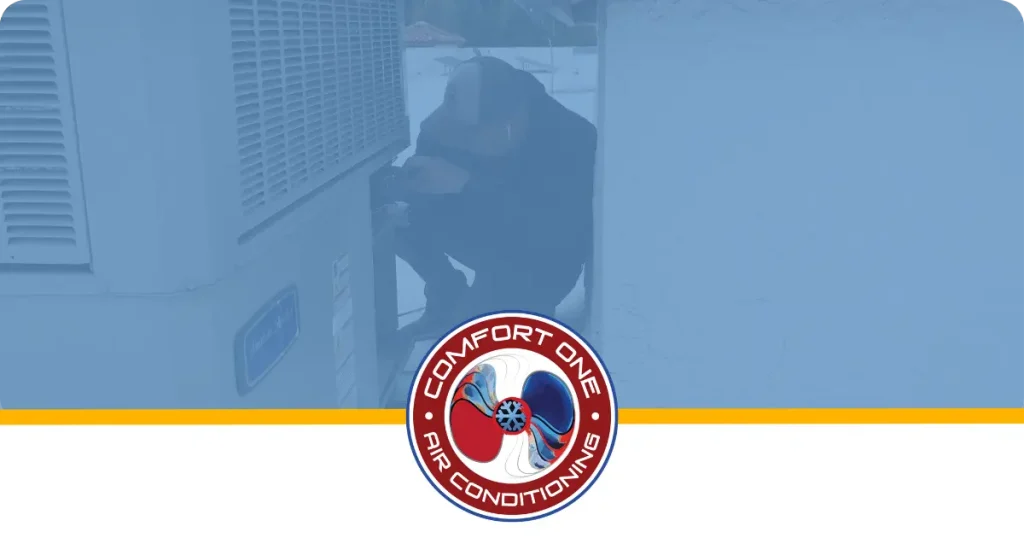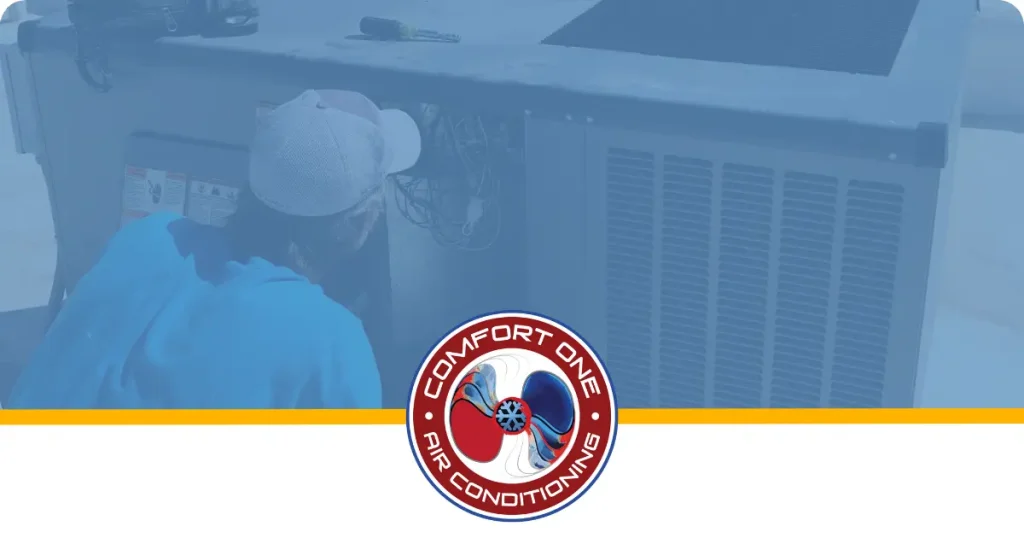Curious about the AC replacement cost in 2025? Typically, air conditioner replacement costs range from $5,000 to $11,000. Your final cost depends on system type, home size, and installation complexity. Read on to understand these factors and budget effectively.
Introduction to Air Conditioning Replacement
Replacing an air conditioner is a significant investment for homeowners, with costs typically ranging from $5,500 to $16,000, including labor and permit fees. The decision to replace an air conditioner hinges on various factors, such as the age and condition of the current system, its energy efficiency, and the cumulative repair costs over time.
A new air conditioner can offer numerous benefits, including reduced energy bills, increased comfort, and improved indoor air quality. When selecting a new unit, homeowners should consider factors like the air conditioner’s SEER rating, size, and type to ensure it meets their specific needs.
Consulting with a licensed HVAC professional is essential to determine the best course of action for replacing an air conditioner. These experts can provide valuable insights into the most suitable options based on your home’s requirements and your budget.
Key Takeaways
- AC replacement costs in 2025 range from $5,000 to $11,000 for standard installations, with potential increases if new ductwork is needed.
- Energy efficiency, system size, and installation complexity significantly influence the total cost of AC replacement, with different system types offering various benefits and price ranges.
- Homeowners can take advantage of rebates and tax credits for energy-efficient AC replacements, which can significantly offset initial costs, especially with new heat pump systems.
How Much Does AC Replacement Cost in 2025?
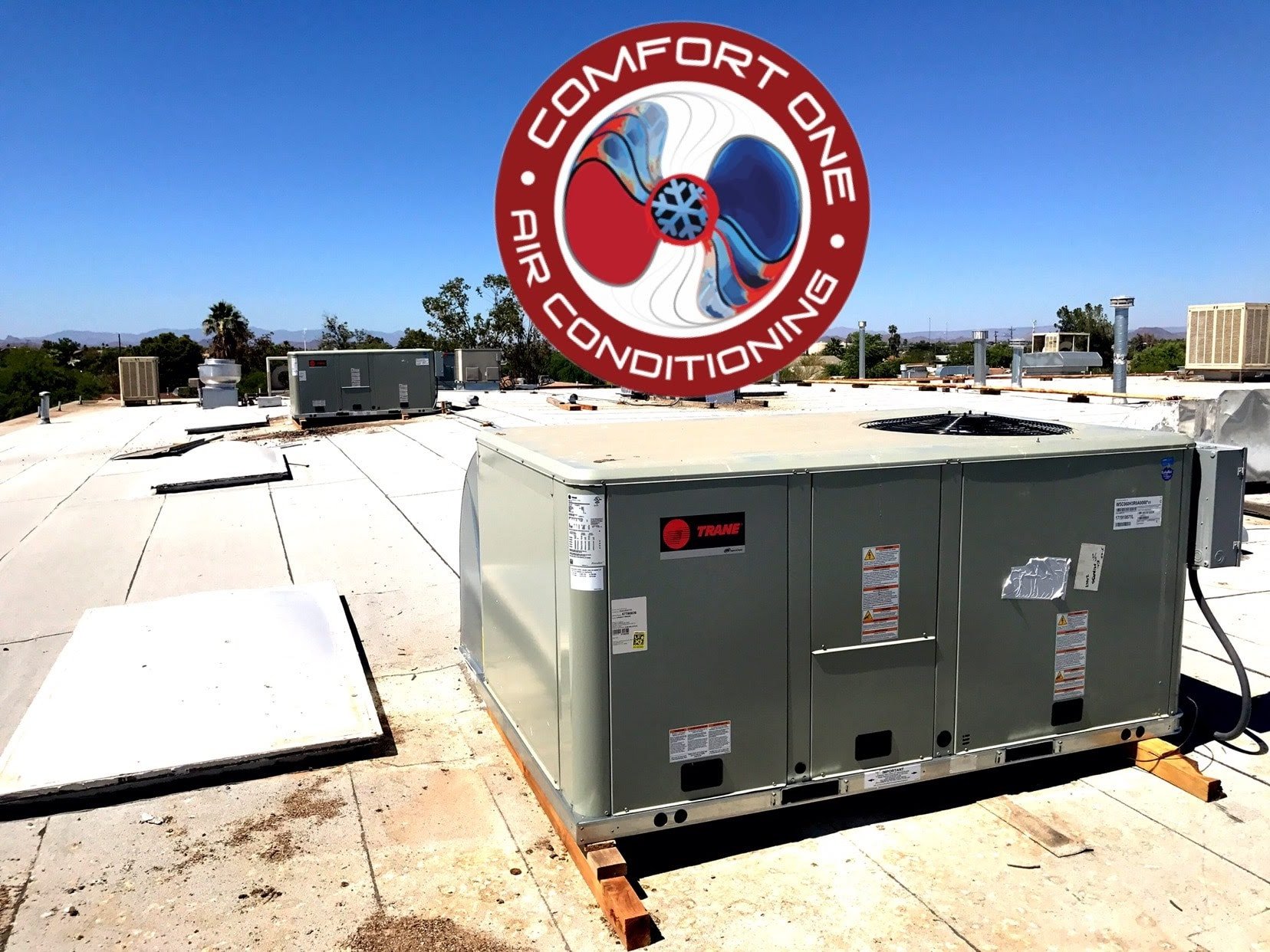
The cost of replacing an HVAC system in 2025 typically ranges from $5,000 to $11,000 for standard replacements without significant ductwork changes. When considering a central AC unit, it’s important to evaluate the SEER ratings for energy efficiency. However, if new ductwork is required, costs can escalate to between $8,000 and $27,000 depending on the home’s size and installation complexity. These prices reflect the current market conditions and the various factors that influence the cost of a new air conditioning system, such as system type, size, and brand reputation.
Opting for a reputable brand usually means higher costs but offers better efficiency and longevity. For example, documented air conditioning replacement cost ranges in Scottsdale include entry-level systems at $6,500, average price systems at $8,500, and high-end systems at $20,000. This wide range underscores the importance of considering your specific needs and budget when selecting a new AC unit.
Energy efficiency, size, and market conditions significantly affect the cost of a new AC unit. Efficiency contributes to long-term energy savings, while the size and complexity of the installation can increase initial costs. Being aware of these factors aids in making a more informed replacement decision.
Breakdown of AC Unit Costs
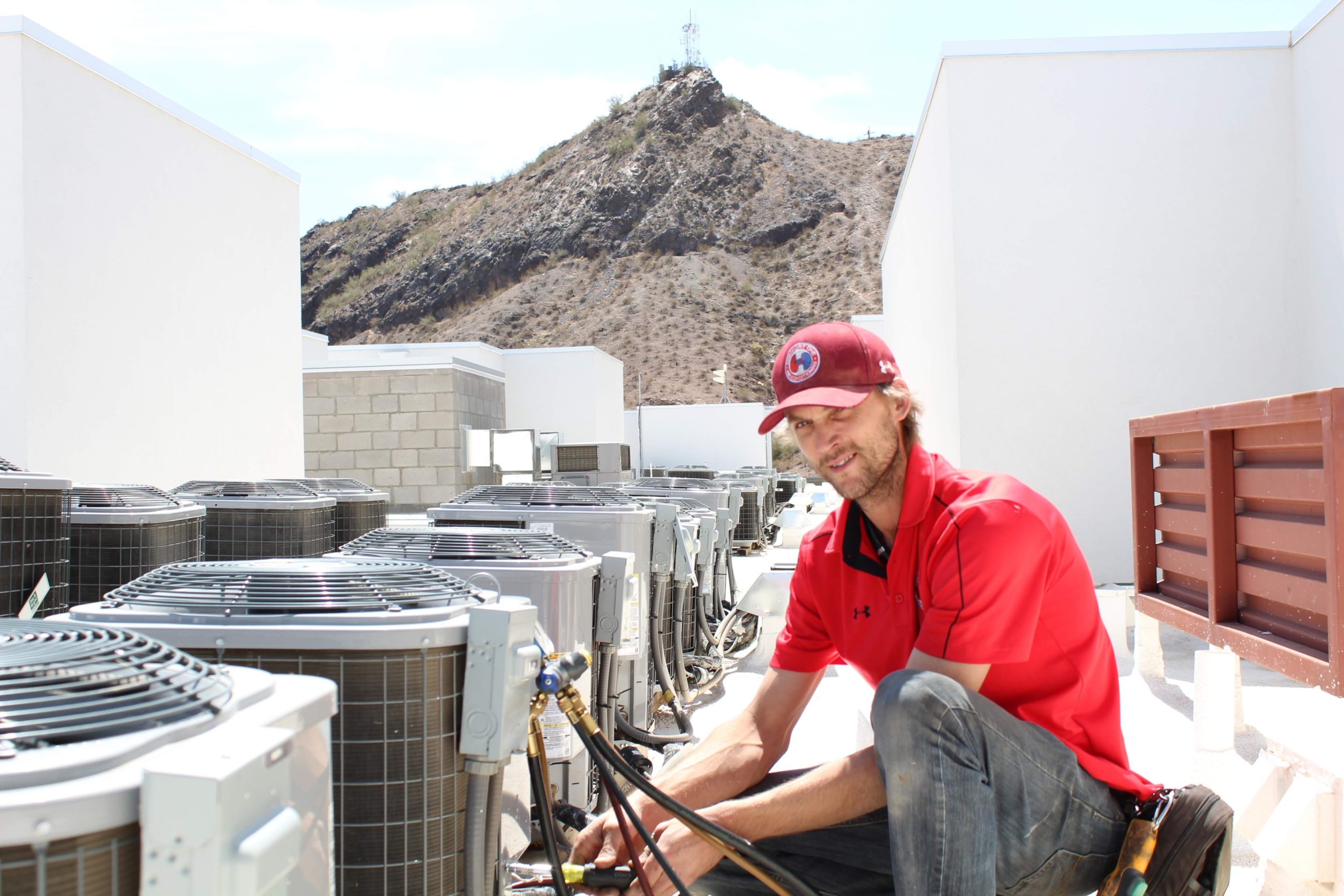
Understanding the cost differences between various types of air conditioning units is crucial when considering AC replacement. The three main types of AC units—split system, ductless mini-split, and packaged units—each have their own cost range and benefits.
The costs for these systems can vary significantly:
- Split system AC units typically range from $6,000 to $20,000
- Ductless mini-split systems from $3,500 to $14,000
- Packaged AC units from $5,000 to $14,000
Each type offers unique advantages, so selecting one that fits your home’s needs and budget is essential.
Split System AC Units
Many homeowners favor split system AC units for their efficiency in cooling multiple zones. These systems consist of an outdoor unit and an indoor unit, which work together to provide effective cooling. Ensuring that the air handler is properly matched with the outdoor unit is crucial for optimal performance. The typical cost range for split system AC units is between $6,000 and $20,000, depending on the system’s specifications and installation complexity.
A major advantage of split system AC units is their capacity to cool multiple zones, making them ideal for larger homes. This zoning system capability ensures that each area of your home receives adequate cooling from the cooling system, enhancing overall comfort and energy efficiency in heating and cooling.
Ductless Mini-Split Systems
Ductless mini-split systems are an increasingly popular choice for homeowners due to their flexibility and efficiency. These systems don’t require ductwork, making them suitable for homes without existing ducts or for cooling specific areas. Regular maintenance, such as changing the air filter, is essential to keep the system running efficiently. Costs for ductless mini-split systems range from $3,500 to $14,000, depending on installation and required capacity.
Mid-range ductless mini-split systems, costing between $6,700 and $9,400, balance affordability and performance. These systems are ideal for homeowners looking to reduce energy costs and improve comfort without the need for extensive renovations.
Packaged AC Units
Commonly used in commercial settings, packaged AC units can also be installed in homes with limited indoor space. These systems integrate all components into a single unit, typically installed in an outside ac unit. The typical ac unit cost for packaged AC units is between $5,000 and $14,000, depending on the system’s size and efficiency.
Packaged AC units are a cost-effective solution for homes where space constraints make traditional split systems impractical. Their compact design and easy installation make them a popular choice for both homeowners and businesses, especially when compared to newer units, old unit options, and ac system alternatives.
Additional Costs and Considerations
Consider additional costs like installation fees, permits, and potential hidden expenses when replacing an AC unit. Additionally, furnace replacement may be necessary if the existing furnace is old or inefficient. Installation fees, in particular, account for a significant portion of the total replacement costs and are influenced by the type of HVAC system and the complexity of the installation location.
The condition of existing ductwork can also significantly impact replacement costs. If the ducts are damaged or inefficient, repairs or replacements may be necessary to ensure the new system operates efficiently. Being aware of these additional costs helps in accurately budgeting for AC replacement.
Installation Fees
Licensed HVAC professionals ensure your new system meets safety standards and operates effectively. Installation complexity and certification requirements for handling refrigerants make professional installation essential. Installation directly affects the system’s efficiency, comfort, safety, and lifespan.
Labor charges for AC installations vary; some contractors offer flat rates, while others charge hourly. Necessary electrical adjustments for modern thermostats may also incur extra expenses. Transparent, fixed-price estimates, like those from Comfort One Air Conditioning Company, help avoid unexpected costs.
Permits and Compliance
Obtaining necessary HVAC installation permits ensures compliance with local regulations. Non-compliance can result in fees for improper installation.
Proper permits and compliance are the first steps in ensuring efficient and safe current system operation to operate efficiently.
Warranties and Extended Coverage
Many manufacturers offer warranties covering parts and labor, but inquire about specific exclusions. Comfort One Air Conditioning Company offers an industry-leading 10-year parts and 2-year labor warranty, providing peace of mind for homeowners. Knowing your warranty terms helps avoid unexpected repair costs.
Extended coverage options can also be beneficial, especially for systems with higher repair costs or frequent repairs, as you may need to decide whether to repair or replace. Proper maintenance extends your system’s life expectancy and reduces the need for minor repairs.
Assessing Your Current Air Conditioning System
The first step in replacing an air conditioner is to assess the current system’s condition, including its age, efficiency, and repair history. Typically, an air conditioner’s life expectancy ranges between 10 to 15 years, depending on usage and maintenance. If your system is nearing or has surpassed this age range, it might be time to consider a replacement.
A thorough evaluation of the current system can help determine whether replacement or repair is the most cost-effective option. Factors such as rising energy bills, diminished cooling power, and overall performance should be taken into account when assessing the current system. If your energy bills are increasing without a corresponding rise in usage, it could indicate that your system is losing efficiency.
A professional HVAC technician can provide a detailed assessment of the current system and recommend the best course of action. Their expertise ensures that you make an informed decision, whether it’s more economical to repair or replace your air conditioner.
Understanding Air Conditioners
Air conditioners are complex systems that require regular maintenance to operate efficiently and effectively. One crucial factor in determining an air conditioner’s energy efficiency is its SEER rating, with higher ratings indicating better performance and lower energy consumption.
Homeowners should understand the different types of air conditioners available, including central AC units, heat pumps, and ductless mini-split systems. Each type has its own advantages and is suited to different home configurations and cooling needs.
Selecting the right size and capacity for your air conditioner is essential to ensure it meets your home’s cooling requirements. An undersized unit may struggle to cool your home, while an oversized unit can lead to inefficiencies and higher energy costs.
Proper installation and regular maintenance are vital to ensure the air conditioner operates efficiently and safely. Regular maintenance helps extend the system’s lifespan and maintain its performance, ultimately saving you money on energy bills and repair costs.
Factors Influencing AC Replacement Costs
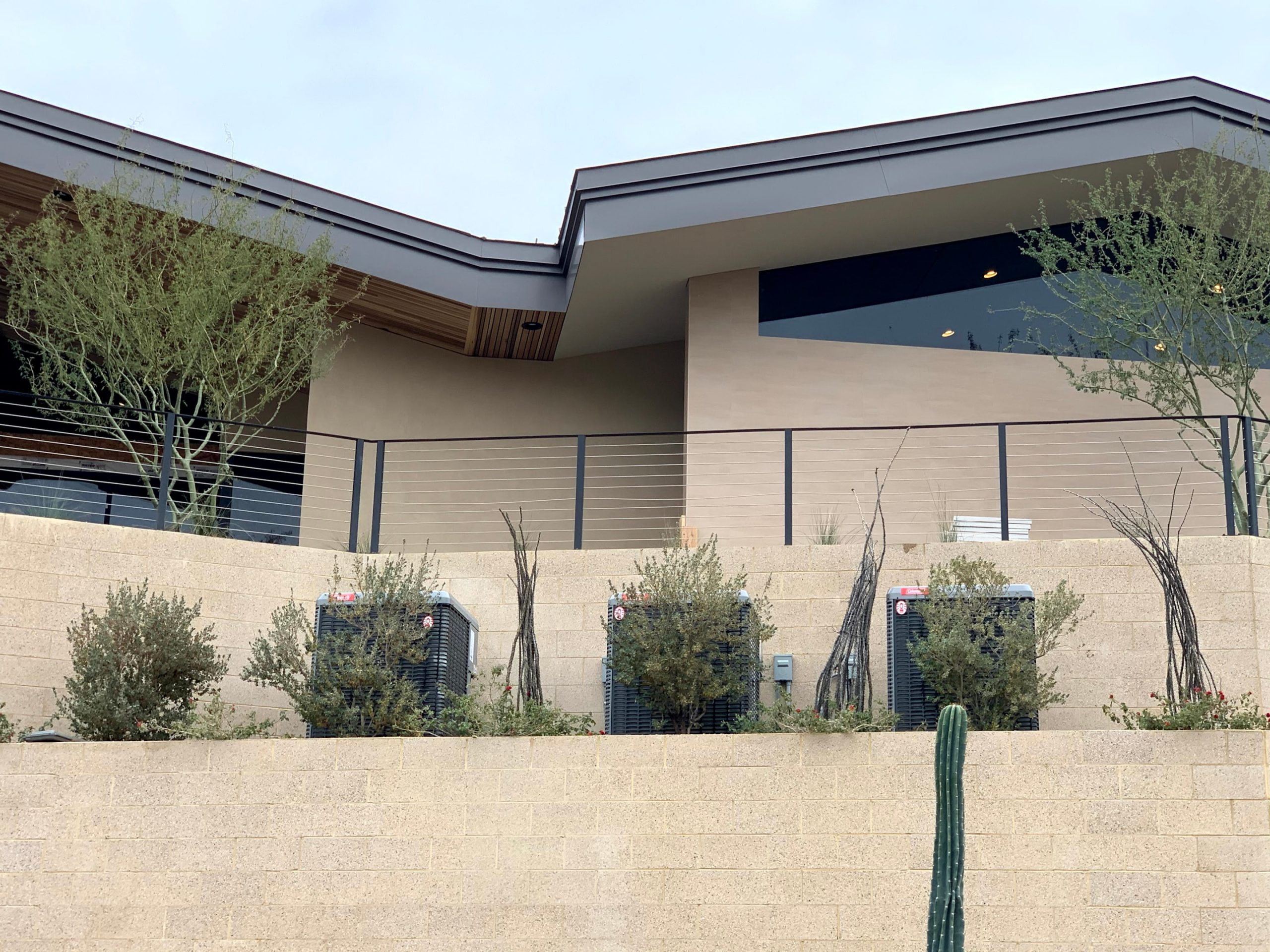
Factors influencing AC replacement costs include energy efficiency, system size and capacity, and labor and professional services. New air conditioning systems offer benefits such as lower electric and gas costs and a reduced carbon footprint due to improved efficiency.
Addressing insulation issues and energy leaks maximizes efficiency when replacing an air conditioner. Regional efficiency requirements can influence your selection and long-term energy cost projections for AC units.
Energy Efficiency and SEER Ratings
The Seasonal Energy Efficiency Ratio (SEER) measures an air conditioner’s SEER rating over a cooling season. Higher SEER ratings often mean increased system costs but lead to lower operating costs and significant energy savings over time. New air conditioners generally offer enhanced energy efficiency, leading to lower energy bills and improved air conditioner’s SEER rating, including options that are Energy Star certified.
Savings from higher SEER ratings vary based on local energy prices and required cooling hours. Investing in a higher SEER unit can pay off in long-term energy savings, reduced energy bills, and less energy consumption.
System Size and Capacity
Your home’s size is crucial in determining the necessary capacity and efficiency of your HVAC system. Incorrectly sizing HVAC systems is common and leads to inefficiencies. A unit that’s too large is likely to fail faster, while a unit that’s too small may not provide adequate cooling.
Comfort One Air Conditioning Company excels in system load calculations for proper sizing. Capacity affects energy efficiency and cooling power, making the right size selection crucial.
Labor and Professional Services
Labor costs are a significant part of the total AC replacement expenses. These costs vary based on job complexity and location, affecting the overall HVAC replacement installation expense.
Hiring licensed HVAC professionals and a service technician ensures proper installation, enhancing efficiency and safety for your HVAC company in the hvac industry. An hvac professional, hvac contractor, hvac technician, hvac technicians, hvac repair, and hvac repairs play a crucial role in this process.
New Technology and Innovations
The air conditioning industry has seen significant advancements in recent years, with new technologies and innovations emerging to improve energy efficiency and performance. For instance, inverter-driven air conditioners can provide significant energy savings and enhanced cooling power by adjusting the compressor speed to match the cooling demand.
Smart thermostats and zoning systems are other innovations that can enhance an air conditioner’s performance. These technologies provide greater control over temperature and humidity, allowing for more precise and efficient cooling.
Homeowners should consider the benefits of these new technologies and innovations when selecting a new air conditioner. A licensed HVAC professional can provide guidance on the latest advancements in air conditioning, helping you choose a system that offers the best energy savings and performance for your home.
Environmental Considerations
Air conditioners have a significant impact on the environment, with older units contributing to ozone layer depletion and climate change. New air conditioners are designed to be more energy-efficient and environmentally friendly, featuring innovations like refrigerant leak detection and eco-mode operation.
When choosing a new air conditioner, homeowners should consider the environmental implications, including energy consumption and the type of refrigerant used. The Inflation Reduction Act provides tax credits and incentives for homeowners who install energy-efficient air conditioners, making it more affordable to choose eco-friendly options.
A licensed HVAC professional can provide guidance on environmentally friendly air conditioner options, helping homeowners make informed decisions that benefit both their homes and the environment.
Financing Your New Air Conditioner
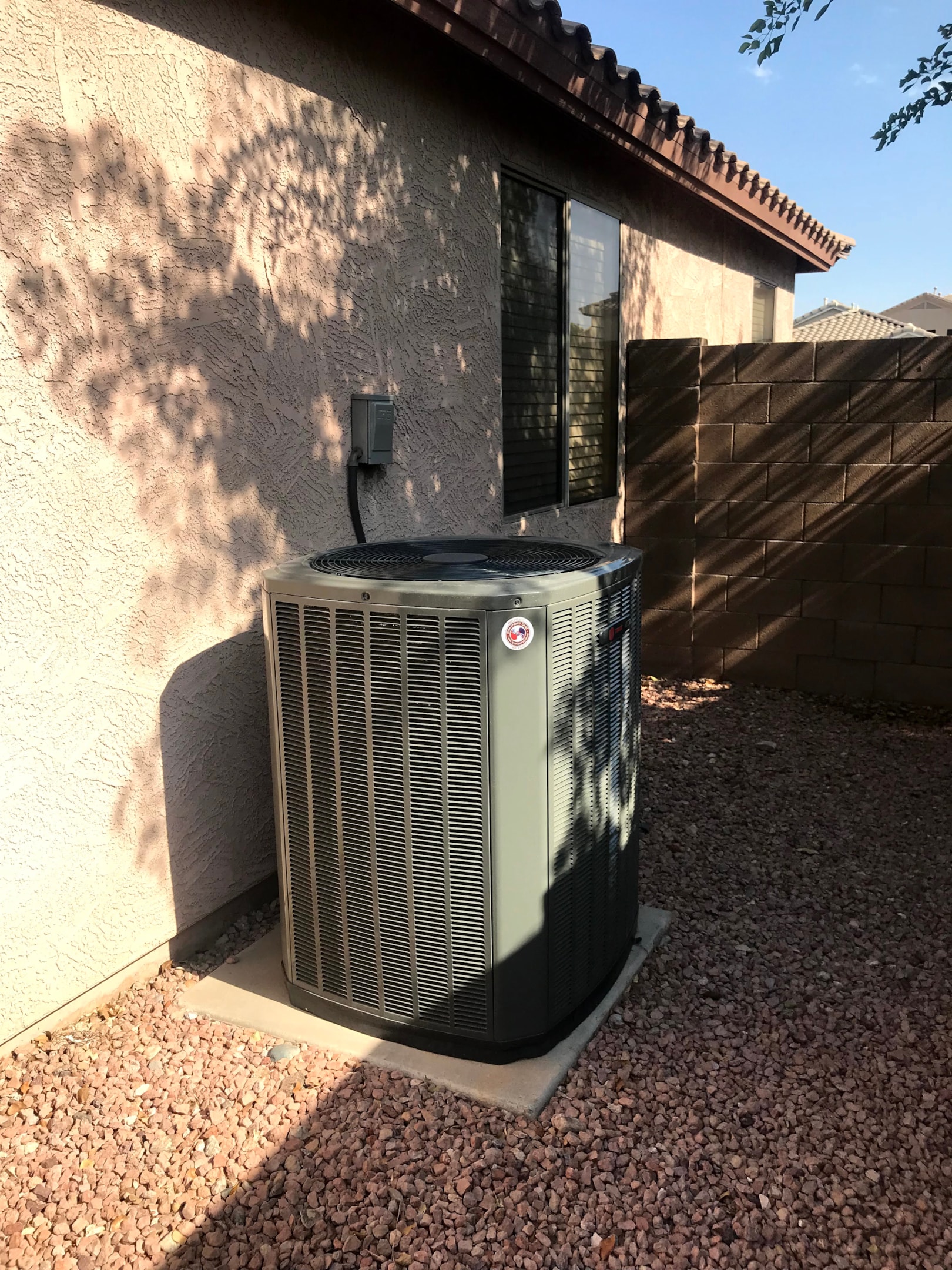
Multiple financing options are available for AC replacement, including partial payment and balance financing. Financial incentives for AC replacement include local utility rebates, government tax credits, and manufacturer rebates. These incentives can help offset the initial investment and make financing more manageable.
Comfort One Air Conditioning Company offers financing options that can offset energy savings from improved efficiency. They calculate ROI for new air conditioning systems, helping customers understand costs versus benefits. Assessing payback periods for new air conditioning systems helps determine how quickly energy savings will offset the initial investment.
Incentives might include rebates from manufacturers, power companies, and local governments. Tax credits for new heat pump systems can reach up to 30% of cost and installation for high-income homeowners or up to 100% rebate for low-income homeowners. These financial incentives can greatly reduce the overall cost of a new air conditioner.
Rebates and Tax Credits
Homeowners can save significantly with rebates ranging from hundreds to over a thousand dollars for energy-efficient AC replacements. Tax credits for energy-efficient home improvements can reach $3,200 annually until 2032, with specific caps on certain items.
For heat pumps and similar systems, up to $2,000 in tax credits are available if they meet specific efficiency standards. Households with incomes between 81-150% of the median can receive up to 50% off the cost of a heat pump. The High-Efficiency Electric Home Rebate Act offers significant rebates for heat pumps, with a maximum rebate covering 100% of new heat pump costs for low-income households.
Starting in 2025, proof of manufacture by certified companies will be required to qualify for these tax credits and rebates. Home energy audits can qualify for a $150 tax credit if they meet specific reporting requirements.
When to Replace Your AC Unit
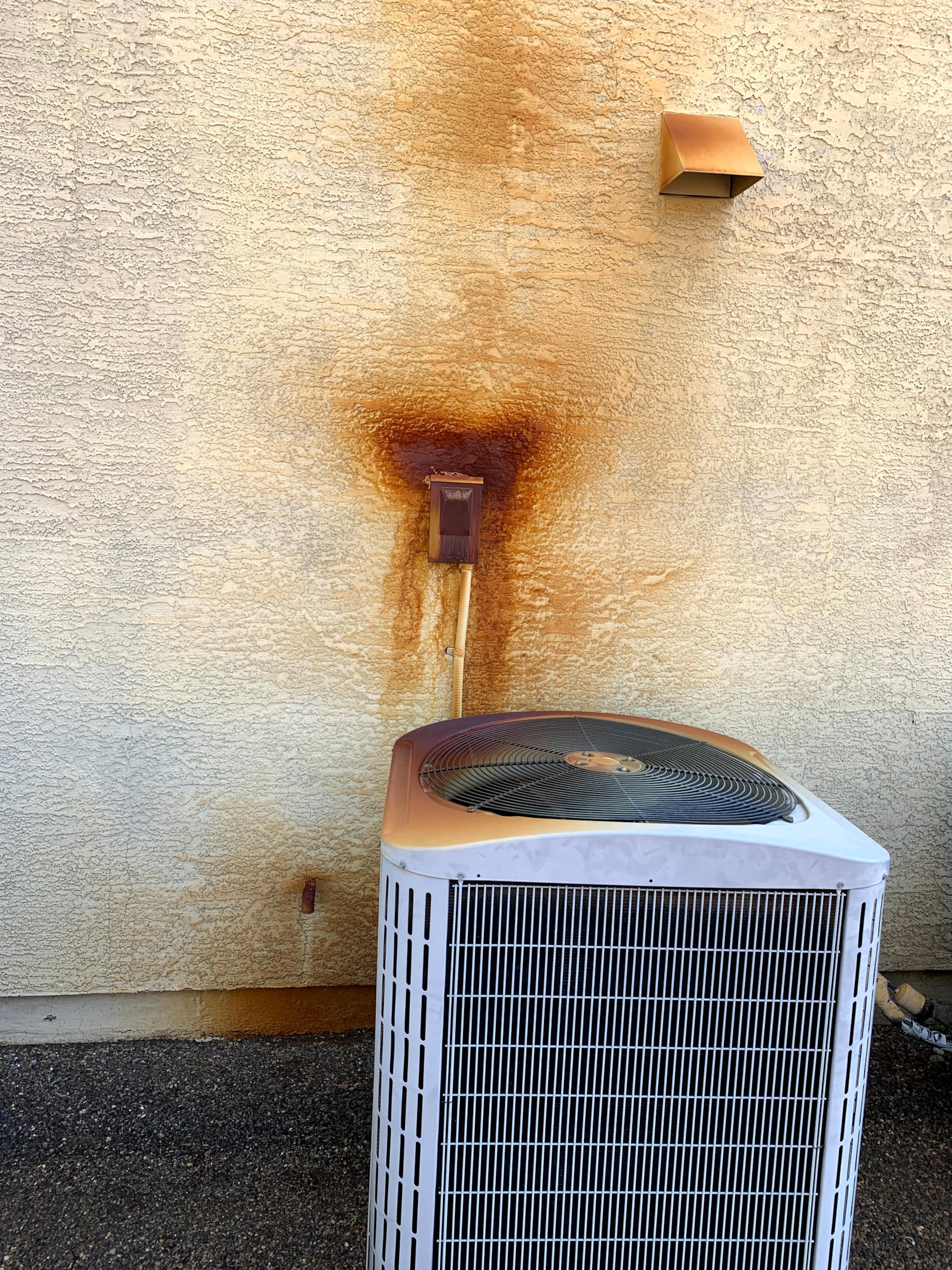
An air conditioning unit typically lasts between 10 to 15 years, which is an important factor in understanding an air conditioner’s lifespan. Consider replacing your air conditioning system if it’s nearing or past ten years old. An AC unit around 15 to 20 years old often indicates the need for replacement, as these are considered aging units.
Frequent repairs over three years may indicate that replacement is more economical. The $5,000 rule suggests replacement if the repair cost multiplied by the unit’s age exceeds $5,000. Inconsistent cooling and rising energy bills without changes in usage suggest your AC unit is losing efficiency. Additionally, frequent ac repair may also signal the need for a replacement.
Older units using R22 refrigerant may need replacement due to its phase-out and associated costs. Frequent breakdowns, excessive noise, or humidity issues are additional signs that a refrigerant leak in an older air conditioner or an older system may be a better option.
Customer Testimonials
Customer reviews highlight Comfort One’s commitment to treating clients like family, fostering a welcoming atmosphere. For example, Steven Fein praised the team’s friendliness and professionalism during the installation process. Molly LaHood expressed gratitude for the team’s excellent job on her AC unit install, highlighting their quality of work.
Comfort One Air Conditioning boasts over 300 five-star Google reviews, indicating high customer satisfaction. The company has a history of assisting over 2,300 satisfied customers with their replacement decisions. These testimonials demonstrate Comfort One’s commitment to reliability and customer service.
Russ Dreyer recounted that Comfort One quickly responded to fix his disabled veteran father’s broken heat system, showcasing their reliable service. The company guarantees customer satisfaction with their ‘Your comfort or we will make it right’ policy, reinforcing their dedication to service.
Summary
In conclusion, replacing your air conditioner in 2025 involves various costs and considerations. From understanding the cost breakdown of different AC units to considering additional expenses like installation fees and permits, being informed can help you make the best decision for your home. Remember to factor in energy efficiency, system size, and labor costs when planning your AC replacement.
Financial incentives, rebates, and tax credits can significantly offset the initial investment, making it more manageable. Customer testimonials highlight the importance of choosing a reliable HVAC company like Comfort One Air Conditioning Company, known for their professionalism and customer satisfaction. Assess your current system’s efficiency and consider replacement when repair costs become too high or the unit exceeds its expected lifespan.
Frequently Asked Questions
What is the typical cost range for AC replacement in 2025?
The typical cost range for AC replacement in 2025 is between $5,000 and $11,000 for standard units, with additional expenses reaching $8,000 to $16,000 if new ductwork is necessary. Factors such as home size and installation complexity can influence these costs.
What are the benefits of a higher SEER rating for my new AC unit?
A higher SEER rating for your new AC unit ensures better energy efficiency, resulting in lower operating costs and significant long-term savings on energy bills. While the initial investment may be higher, the overall financial benefits justify the choice.
How do I know when it’s time to replace my AC unit?
It is time to replace your AC unit if it is 10-15 years old, if repair costs approach 50% of its value, or if you are facing frequent breakdowns and increased energy costs. Investing in a newer unit can provide better efficiency and lower operating costs. Additionally, consider the $5,000 rule, which suggests replacement when combined repair costs and unit age exceed this amount.
What additional costs should I consider when replacing my AC unit?
When replacing your AC unit, it is essential to consider installation fees, permits, and possible ductwork repairs or replacements, as these can substantially increase the overall expense. Ensuring compliance with local regulations through permits is also crucial.
Are there any financial incentives available for AC replacement?
Yes, there are financial incentives available for AC replacement, including local utility rebates, government tax credits, and manufacturer product rebates, which can significantly reduce the overall cost. For instance, tax credits for energy-efficient improvements can reach up to $3,200 annually until 2032.
Author
-

Tapani Ojalehto is a RSI-top tech with over 15 years of experience in the HVAC industry. Tapani Ojalehto is the owner and founder of Comfort One Air Conditioning LLC, a HVAC company in Scottsdale, Arizona. Tapani enjoys hockey, archery, hunting, fishing and everything outdoors. He loves quality time with his wife Jessica of 15 years and their pup Loki Bear.
View all posts


